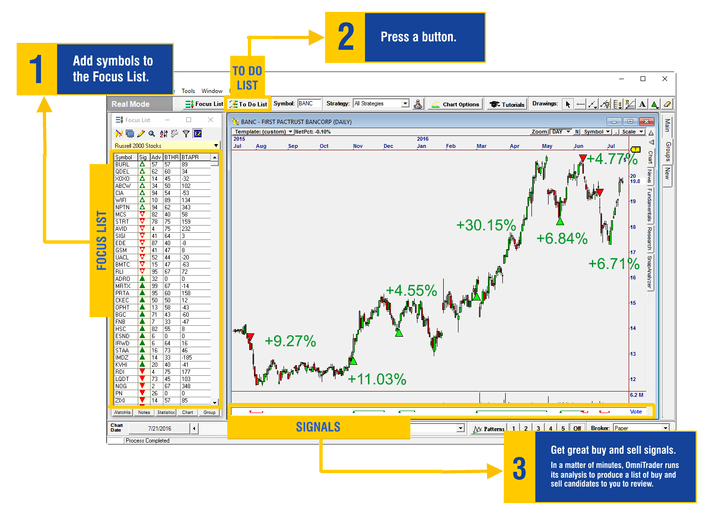Contents
On the other hand, management accounting is based on both historical and predictive information. Financial RatiosFinancial ratios are indications of a company’s financial performance. These reports are only created for internal purposes and not for external stakeholders. Management accounting is much more pervasive in scope since the entire business is moved by a single decision made by the top management. It also focuses on predicting future scenarios to prepare the business to face new challenges and reach new milestones.

It provides information about future events and can be used to help determine budgets, profit margins, sell prices, etc. Furthermore, both are concerned with revenue, expenses, assets, liabilities, and flows of cash. Also, both require quantifying the results of the organization’s economic activity. Another significant disadvantage is that personal bias and preconceptions undermine the objectivity of management accounting decisions. So, from the acquisition of data to its presentation in financial reports, there is a chance of manipulation.
Financial Accounting vs. Management Accounting Infographics
Financial accountants have a solid knowledge base and skill set in accounting with a good understanding of debit, credit, and financial reporting, which is helpful when preparing managerial financial reports. Similarly, Financial Reporting is a standard requirement for all audited companies to follow. A company’s performance can be measured by the reports published by such reporting system.
It proves to be a prerequisite for analyzing the business’s strength, profitability, & scope for betterment. Cash Flow StatementA Statement of Cash Flow is an accounting document that tracks the incoming and outgoing cash and cash equivalents from a business. So, according to the rule of debit and credit, when an asset increases, difference between financial accounting and management accounting we will debit the account, and when liability rises, we will credit the account. It involves the provision of information to the management so that they can undertake their managerial responsibilities and functions effectively. So shareholder most of their decision taking rights to company’s board of director and corporation.
- However, the primary objective of financial accounting is to provide information for use by external users while Management Accounting focuses on providing information for making better business decisions within the organization.
- Managerial accounting information is aimed at helping managers within the organization make well-informed business decisions, while financial accounting is aimed at providing financial information to parties outside the organization.
- Cash FlowCash Flow is the amount of cash or cash equivalent generated & consumed by a Company over a given period.
- Cost Of Goods SoldThe Cost of Goods Sold is the cumulative total of direct costs incurred for the goods or services sold, including direct expenses like raw material, direct labour cost and other direct costs.
- Financial RatiosFinancial ratios are indications of a company’s financial performance.
Financial ControlFinancial controls refer to the development of policies and procedures by an organization to manage its financial resources and operate efficiently. For the latest updates, news blogs, and articles related to micro, small and medium businesses , business tips, income tax, GST, salary, and accounting. The accounting types required education and basic expertise in accounting concepts. There can be substantial variances in the estimated performance of the business if it follows certain strategies and the actual performance that comes out. Management accounting helps in understanding the variances in performance and shows the corrective measures to rectify the variance in performance.
What is the primary objective of financial and management accounting?
The main objective of financial accounting is to ascertain the results of business operations of the business, in terms of profit or loss for the period. Also, it tends to provide information relating to the company’s financial standing on the last day of the accounting period. Financial and management accounting, whereas financial management is a process with three main elements, i.e., financial planning, financial control, and financial decision making. Accounting Has Two Main TypesThere are different types of the accounting which an organization can follow as per the scope of its work and need of stakeholders.
This allows the board of directors, stockholders, potential investors, creditors and financial institutions to see how the company has performed during a specific period of time in the past. If a business is considered a publicly-traded company on the stock market, the reports must be made part of the public record. In a financial accounting course, students learn how to prepare, read and analyze financial statements. The preparation of financial accounting statements is required for a period of 12 months, but while there are no legal requirements for the preparation of management accounting reports. Financial accounting has some internal uses as well, but it is much more concerned with informing those outside of a company. The final accounts or financial statements produced through financial accounting are designed to disclose the firm’s business performance and financial health.
The team involved in preparing Financial statements must follow all the relevant legal requirements preparing financial statements, like adherence to Indian Accounting Standards or Generally Accepted Accounting Principles . Financial accounting emphasizes company-wide reports, while segment reports are emphasized by management accounting. Because it is https://1investing.in/ manager oriented, any study of managerial accounting must be preceded by some understanding of what managers do, the information managers need, and the general business environment. Both of them collect and categorize accounting data in order to prepare financial reports. Both accounting types will be responsible for generating financial reports.
There are various layers of management that strive to plan and coordinate a company’s day-to-day operations. So, if you thrive to gain managerial skills & aspire to build a rewarding career in management, Executive PG Program in Management is just what you may need. Both Financial Accounting vs Management Accounting are aimed to report numbers that will be used for the betterment of the future prospects. Reporting may be a little different in both types of accounting, but the end numbers are indicative of growth of the company, and hence management may take appropriate decisions to gear up the progress accordingly.
The above information presents a few key points of difference between financial accounting and management accounting. The difference between financial accounting and management accounting is very important to understand as both of them serve different purposes and audiences. On the other hand, management accounting assists an organization in making internal decisions. This accounting is useful for top-level managers like the CEO, CFO, and middle-level managers that include the General Manager, HR, etc.
Features for business
Professor SandersonFor example, let’s say you’re in charge of running the marketing department for your company. Understanding accounting will also help you analyze your profits and make informed strategic business plans. The main objective of managerial accounting is to produce useful information for a company’s internal use.

The process is to summarize, analyze, and record such information to be reported to management, creditors, shareholders, investors, and the oversight officials or tax officials. Management accounting allows to predict or forecast the cash flow of a business. Management can take independent decisions for the benefit of the firm and can state different policies or corrective measures through which the management can increase the business’s cash flow.
Reporting Beneficiaries
It is the profit a company gets when it issues the stock for the first time in the open market. Term DebtLong-term debt is the debt taken by the company that gets due or is payable after one year on the date of the balance sheet. It is recorded on the liabilities side of the company’s balance sheet as the non-current liability. Cost Of Goods SoldThe Cost of Goods Sold is the cumulative total of direct costs incurred for the goods or services sold, including direct expenses like raw material, direct labour cost and other direct costs. Credit the increase of liabilities and incomes and the decrease of assets and expenses.
This enables the board members, shareholders, future investors, creditors, and investment firms to understand how the company fared in the past. Managerial accounting reports tend to be more detailed and technical in nature. Companies are often looking for ways to gain a competitive advantage, so they examine a lot of information that might be hard to understand for outside parties. Managerial accounting statements can be drawn up by Certified Management Accountants , while financial accounts are drawn up by Certified Public Accountants . Thus, from a company’s perspective, neither of these reporting can be missed, however, from an analyst’s perspective, it is very important to use proper tools to understand and analyze the reports in order to make the right decisions.
It deals with the provision of financial data to the company’s management so that they can make rational economic decisions. The objective of financial accounting is to show a true and fair view of the firm to external stakeholders. In contrast, the objective of management accounting is to assist internal management in taking futuristic decisions for the benefit of the company. Financial accounting follows certain fixed rules of GAAP and INDAS whereas management accounting does not follow any fixed rules.
